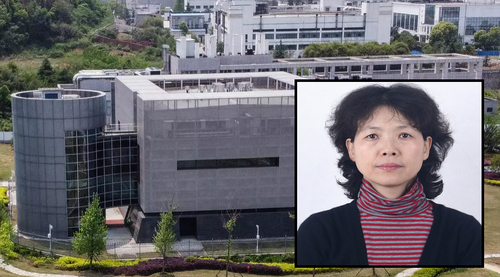With the U.S. on Tuesday recording its first known case of the novel coronavirus variant that’s been sweeping across the U.K., the pressure is on to track the variant’s spread and parse out why it seems to be more contagious — and what that means for the future of the pandemic.
At the center of those efforts is a group at the Seattle-based Fred Hutchinson Cancer Research Center that has been cataloging and analyzing genetic changes in the virus since the pandemic began. Nextstrain, co-founded by Hutch computational biologist Trevor Bedford, is an uber-dashboard of genomics, mapping out mutations and the routes followed by every known variation of the virus so far.
Now, Bedford and the project’s far-flung team of bioinformatics experts are helping figure out how widespread the variant might already be in the U.S. and how quickly it could become dominant here, as it did in the U.K.
On Tuesday, Bedford answered questions about the new variant, including its potential impacts on vaccine effectiveness and development of herd immunity and whether additional measures might be needed to keep it in check.
The conversation has been edited for clarity and brevity.
Q: Detecting and monitoring the new variant requires sequencing the genomes of viruses from large numbers of infected people. How is that being done in the U.S.?
A: The U.K. early on decided to have a consolidated national approach to doing this genomic surveillance. They were able to have a few big labs do a lot of testing and then share positive specimens with a handful of big sequencing labs. In the U.S., most of public health is really at the state level. So what’s happened is that there are a handful of public health labs that are doing a good job of sequencing viruses that are collected in their state and sharing that. But there isn’t really a national strategy.
The CDC has given grants to help support academic labs and states to do this work, but it’s a bit slower than it should be. Because this work is done at the state labs, issues of personnel and resources mean that the sequencing often doesn’t end up as the top priority.
Q: The U.S. ranks 43rd in the world in the percentage of positive cases that are sequenced, and you were recently quoted in a New York Times editorial that called for a major expansion. Is anything being done?
A: The U.S. has sequenced and shared over 50,000 virus genomes, more than any country in the world, except for the U.K. However, the turnaround times have not been great. There are thousands of viruses that were shared in the database in December, but a great many of those were from specimens collected back in March.
The CDC has plans to (start) receiving specimens from the state labs and then doing the sequencing more centrally and share the data. So there are plans to have thousands more genomes sequenced every month, but I don’t know when that will come online.
Q: The first U.S. infection with the U.K. variant was reported Tuesday in a Colorado man in his 20s with no recent travel history. How prevalent do you think that variant and a similar one detected in South Africa are in the U. S.?
A: My working hypothesis is that they are here but circulating at very low levels. And if they are more transmissible, which I think is likely, then they will be expanding, and we’ll catch them when they hit some frequency threshold.Q: Travelers from the U.K. now need a negative coronavirus test to enter the U.S. How effective do you think that will be in slowing the spread of the variant?
TB: I think it’s smart at this point. I don’t have hope that we will be able to contain the U.K. variant in the U.K. in the same way I didn’t have hope in February that we were going to contain COVID in China. But testing to reduce the number of infected individuals traveling can still slow things down.
I think it might stop mattering so much once these variants become more common here.
Q: You’ve said the new variant might be slightly less susceptible to vaccine-induced immunity, but that it isn’t different enough to completely foil existing vaccines. Why?
A: The main reason I think that is because there’s a particular mutation in the U.K. variant that removes two different (portions) of the spike protein, and that tucks in a bit of protein that was sticking out and was an antibody target. So it removes that target for antibodies.
And there was a study from a lab in Cambridge … where they took serum from people who had recovered from COVID and measured it against wild type virus and against viruses that have this deletion. And they saw that the antibodies of the recovered individuals neutralize the mutated virus significantly less than the wild type virus.
If I had to hazard a guess, I believe we could see a modest reduction, like from 95% vaccine effectiveness to 85% or so, but I don’t think it would really severely inhibit the vaccine.
Q: If this variant becomes common and lowers the overall effectiveness of the vaccines even slightly, what are the implications for the development of herd immunity?
A: I think we’ll still get there. It’s just going to be a bit more challenging.
https://www.seattletimes.com/seattle-news/health/a-qa-about-the-new-coronavirus-variant-with-the-fred-hutch-scientist-whos-been-tracking-its-spread

